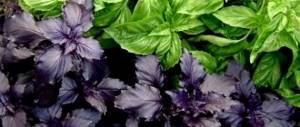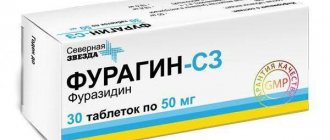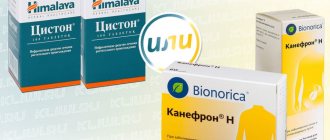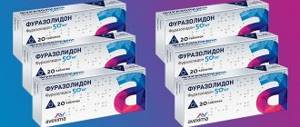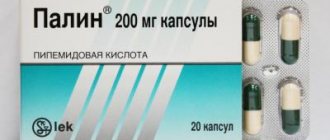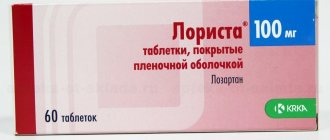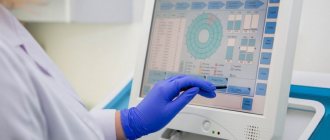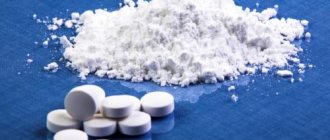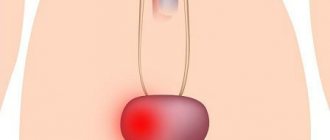To obtain the correct treatment result, Cyston should be taken together with uroantiseptics, which are capable of destroying and removing pathogenic mycobacteria from the patient’s body that cause the infection. After complete destruction of the pathogenic flora, Cyston therapy continues for several weeks until all unpleasant symptoms are eliminated. Doctors usually recommend the use of Cyston to complete therapy after completing a course of antibiotics. In this case, the active substances of the drug allow you to restore the bladder mucosa and reduce the risk of relapse of the disease or consequences in the form of chronic manifestations.
Release form and composition of Cyston
Cyston attracts with its composition, which includes only natural ingredients. This preparation includes plants such as:
- two-carp stem;
- reed saxifraga;
- madder cordifolia;
- filmy stuff;
- rough strawflower;
- onosma bracts;
- vernonia ash;
- fragrant basil;
- fava beans;
- Tribulus creeping;
- mimosa bashful;
- fragrant povonia;
- horsetail;
- teak.
Each component is processed in a specific way, which allows all the properties of the plants to be optimally revealed. Due to a special combination of extracts, it is possible to achieve diuretic and antimicrobial effects. Some consumers are confused by the appearance of this medicine, but this is due precisely to its natural composition. The drug cystone is sold in the form of small brown tablets, which are packaged in a small plastic jar. One jar contains a hundred tablets, which is enough to complete a course of treatment.
Description
According to statistics, every second woman has encountered cystitis at least once in her life. This is a disease characterized by an inflammatory process in the mucous membrane of the bladder and is of an infectious nature. Men also get it, but due to the anatomical features of the male genitourinary system, this disease can affect them much less often.
Anyone who has encountered this pathology on their own will describe unpleasant pains, frequent urination, and in some cases even disruptions to the usual work and rest schedule.
The effect of Cyston's medicinal components on the body
According to the annotation, the drug is an excellent diuretic. Due to its unique composition, cystone has a wide range of effects on the body.
Effects produced by the medicine:
- Diuretic;
- Antibacterial;
- Anesthetic;
- Relieving inflammation;
- Antiseptic;
- Destruction and removal of stones.
These properties completely determine the indications for the use of cystone, which turn out to be varied.
Indications for the use of Cyston
Cyston tablets may have the following indications for use:
- Urolithiasis disease;
- Diseases of an infectious nature;
- Pyelonephritis;
- Crystalluria;
- Gout;
- Nephrolithiasis;
- Prevention of urinary tract diseases.
If you have stones or are prone to their formation, you can take the product in courses to achieve optimal results. The treatment regimen is selected by the attending physician, taking into account the general condition of the body and the presence of concomitant diseases. The patient’s well-being is also constantly monitored to exclude side effects.
For diseases of an infectious nature, for example, cystitis, the drug is used as part of a complex treatment. Antibacterial therapy is absolutely necessary, which some patients do not do. Because of this, the disease only fades, which leads to the disease becoming chronic.
Cyston in acute pyelonephritis is used as part of complex treatment to relieve pain and remove infection from the body. However, you cannot completely rely on this remedy, since antibiotics are additionally required. This is the only way to avoid complications and achieve complete victory over pathology.
For other pathologies, a specialist determines how to take the drug. Concomitant medications are also selected to achieve optimal results. However, there are standard treatment regimens that determine how to take cystone correctly.
Conclusion
Cyston is an effective remedy for cystitis and other diseases of the urinary system. The natural composition makes the drug suitable for the treatment of all patients, including pregnant women and children.
It can be combined with other medications. The product can be used to prevent cystitis and urolithiasis. It can be alternated with various medicinal herbs. This will further enhance the effectiveness of the drug. Reviews from patients who were treated with this remedy are most positive.
How to use for cystitis, dosage features and duration of use
According to the attached instructions, cystone must be taken after meals. You should immediately drink half a glass of water, and it is also recommended to drink more fluids during treatment with this drug.
If the patient is concerned about the increased formation of kidney stones, cystone should be taken two to three times a day, two tablets. The course of treatment lasts from four months to six months, sometimes until the stone passes. In this case, the specific dosage of cystone and the duration of the course are determined by the attending physician.
Cyston for cystitis and other infectious diseases is taken two to three times a day, two tablets. The duration of treatment is usually from one to three months. It is also necessary to use an antibiotic, since cystone will only relieve unpleasant symptoms. He is not able to completely defeat the infection, which leads to the disease becoming chronic.
If you are undergoing treatment with cystone, it is better not to drink alcohol with it. There is no exact data on the effect on the body, but the effectiveness of treatment is reduced. If you try to get treatment and drink alcohol at the same time, precious time will be lost. The disease progresses, and the patient's condition may worsen.
For children under six years of age, the drug is prescribed half a tablet three times a day. For children under fourteen years of age, it is good to take one tablet three times a day. The duration of treatment is approximately four weeks. Whether this remedy can be taken in each specific case is decided by the attending physician after an appropriate examination.
Many experts recommend using cystone for the prevention of urinary tract diseases. Its use is carried out one tablet two to three times a day for several months. As a supplement, suppositories are used, which relieve pain symptoms and alleviate the general condition of the patient.
Cyston can be prescribed during pregnancy and lactation without any particular concerns. The dosage and duration of use depends on the disease. Most often, the dosage does not need significant adjustment, even during pregnancy. This product does not affect the baby during breastfeeding, so it can be used almost without fear. The only case when you should not use cystone during pregnancy is individual intolerance to individual components.
No-shpa
It’s worth saying right away that this drug is more than unique, well, at least in that it has been produced for several decades absolutely without changing the composition or manufacturing method.
Traditionally, the drug is considered an analgesic, but in fact it has a sedative, antiseptic and restorative effect. The basis of the clinical use of the drug is pain relief by relieving spasmodic attacks of smooth muscles (bladder and urinary tract).
Drotaverine hydrochloride, a well-known analgesic compound used for external and internal administration, was used as a substance that exerts a therapeutic effect.
In the case of no-shpa, we have two forms of release - tablet and injection. Both of them can be used to treat cystitis, as a first aid remedy and during pre-medical care.
Dosage, schemes for different ages
For cystitis, No-shpa is recommended for use immediately (without a doctor’s prescription), but in a strict dosage:
- for tablets, the average dose per day (for an adult) is from 120 to 240 mg in 2-3 doses (it is advisable to distribute the hours of administration evenly over time), provided that a single dose should not exceed 80 mg;
- with the injectable form of the drug it is more complicated - the amount of medication per day is supposed to be from 40 to 240 mg, but it is worth considering that from 40 to 80 mg can be administered at a time (intravenously and extremely slowly).
There is no special regimen for taking this drug; rather, you need to go by “feels” - if spasms and pain are completely relieved, you can stop taking the medicine or reduce the dosage.
No-spa can be used to prevent exacerbations of chronic cystitis, provided that the intake is regular and systematic (preferably 40-80 mg at night).
Side effects and contraindications
We immediately note individual intolerance to the drug, as well as serious problems with the kidneys and heart.
No-shpa is not recommended for use in combination with strong psychotropic drugs, tranquilizers and antipsychotics.
The drug does not have the best effect when combined with alcohol and drugs.
An overdose can cause breathing problems, spikes in blood pressure and impaired blood flow to the extremities.
Side effects include diuretic properties and mild physical ailments (general weakness, drowsiness, mild nausea).
In principle, the medicine affects each individual organism differently, so someone may have a drop in blood pressure, accompanied by headaches and loss of sleep.
During pregnancy, No-shpu is taken only as prescribed by a doctor, and during breastfeeding, taking the drug is prohibited.
Prices and analogues
Among the large number of analogues, we note the closest and most effective - “spasmol” and “drotaverine”, the cost of which, on average, is about 200 rubles. A package of No-Spa, similar in number of tablets, costs a little less - around 180 rubles, but you should know that:
- No-spa is a balanced drug, the effect of which is not limited only to antispasmodic properties;
- The release forms of the drug are suitable for any type of cystitis, and the first effect is achieved within half an hour after taking the dose of the medicine;
- The traditional no-shpa tablet has virtually no serious side effects, and it has been tested for many years of use with an extremely low percentage of failure to achieve the desired result.
Which is better for cystitis: Cyston or Canephron
Many patients do not know which is better - cystone or canephron, so disputes constantly arise. If we compare these two drugs in terms of their capabilities and spectrum of action, they are almost the same. Canephron and cystone fight infections and pathologies of the urinary tract, so they are often used for cystitis and pyelonephritis. Also, both medications are used to prevent urolithiasis. However, there are some differences that you should be aware of.
If we compare both drugs in composition, then if there is a tendency to allergic reactions, preference is given to canephron. It contains fewer components, so the likelihood of allergies is minimal. When effective antibacterial therapy is required, it is better to choose cystone. It allows you to reduce the number of bacteria and quickly remove the infection from the body. During pregnancy, with gestosis, you should choose Canephron. It reduces the total amount of protein in the urine, which is important for expectant mothers.
In general, the final choice of what to take – canephron or cystone, or phytolysin – should be made by the attending physician. For example, phytolysin has a large number of contraindications, so its prescription should be optimally justified. Canephron attracts attention with its convenient form, when you can count out the medicine in drops. This form of release is suitable for people who have problems swallowing any tablets.
Analogue drugs
There are a number of herbal preparations used for cystitis. They differ from Cyston in composition and release forms.
Cyston analogue drugs for the treatment of cystitis - table
| Drug name | Active substance | Release form | Contraindications | Permissible age for prescribing the drug | Price |
| Canephron |
|
|
|
| From 329 rubles |
| Herbal tea Altai No. 22 |
| Filter packages |
| 18 years | From 58 rubles |
| Spilled |
|
|
| 18 years | From 422 rubles |
| Phytolysin |
| Paste for oral administration |
| 18 years | From 329 rubles |
| Uronephrine |
| Drops for oral administration | Hypersensitivity | 18 years | From 164 rubles |
| Uronephron |
| Gel for oral administration |
| 18 years | From 200 rubles |
| Monurel |
| Pills |
| 18 years | From 428 rubles |
| Urolesan |
|
|
| 7 years | From 263 rubles |
Cyston analog drugs - photo gallery
Herbs are produced in a convenient form of filter bags
Prolit contains extracts of medicinal plants
Phytolysin is available in the form of a paste for oral administration.
Monurel is used to treat cystitis
Urolesan is a combined herbal preparation
Contraindications to Cyston
Cystone has few contraindications due to its natural composition. Some people may have an allergic reaction to one of the components of the drug. Also, this medicine should not be used if there is severe pain or if there are large stones. A large stone can block the ducts, which will lead to stagnation of urine in the kidney and complete loss of the organ. Because of this, an ultrasound scan is required before using cystone. You should also take cystone with caution during pregnancy, since pregnant women do not always objectively assess the severity of their illness.
Prevention
In order not to be treated for cystitis, you must follow these simple rules:
- Timely and completely treat sexually transmitted diseases and infections of the genitourinary system;
- Observe the rules of personal hygiene;
- Strengthen immunity;
- Lead an active lifestyle, eat right, avoid bad habits;
- Underwear should only be made of cotton material, comfortable and not constricting the genitals;
- Use contraception.
Every patient should understand that treating cystitis at home can lead to serious consequences. This disease can occur independently or be complicated by other diseases of the genitourinary system.
Therefore, it is not recommended to use even the safest medications without consulting a doctor. And also read reviews of people on the use of this drug. Herbal preparations should be taken if there are no complications such as fever and severe pain.
After completing the course of treatment, it is necessary to undergo control tests to determine whether cystitis has been completely cured.
